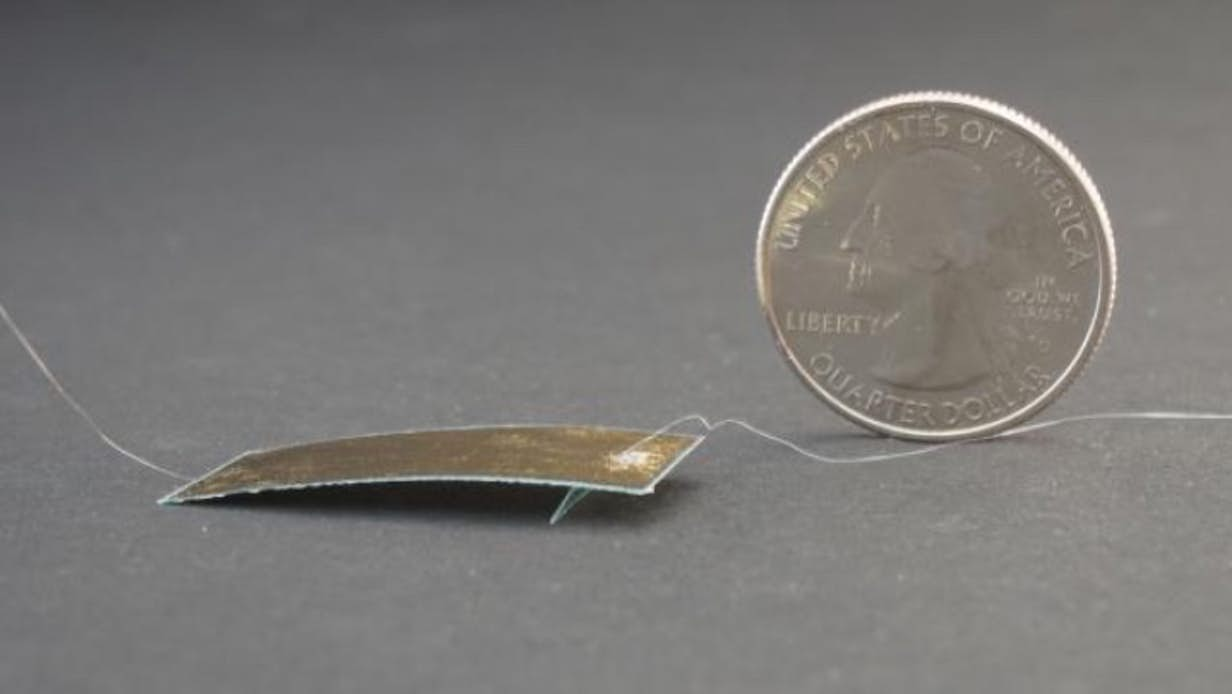Cockroaches do more than just give creeps to the people; they can survive getting stepped on quite successfully. This is a potential problem in a household, but this resilience can prove to be a great feature for the mini-robots that are being designed for carrying out reconnaissance in disaster sites. A team of scientists at the University of California, Berkeley has come up with a robot with the same resilience.

The robot is ‘the size of a large postage stamp’ and is comprised of a thin rectangular sheet of a material that is known as polyvinylidene fluoride (PVDF) that is then coated using an elastic polymer. PVDF is piezoelectric – implying that it expands or contracts when an electric current is applied to it. Two hard-wired electrodes are employed for applying an alternating current to the robot that is elastic-coated. The resulting contraction and expansion get converted into a rapid series of contracting and expanding motions. An angled ‘leg’ located at the underside and front of the contraption helps to convert these motions into forward-movement.

This specific arrangement enables the robot to move at a speed of 20 body lengths per second – the fastest speed of any insect-scale robot. It is also capable of climbing slopes, carrying small payloads (peanut), and despite weighing in at 1/10th of a gram, it can survive weights of up to sixty kilograms. The scientists are working on how to replace the thin electrical wires using an onboard battery while also adding a gas sensor to the robot along with making it steerable remotely.

Professor Liwei Lin, a senior author of a paper on the research, said, ‘Most of the robots at this particular small scale are very fragile. If you step on them, you pretty much destroy the robot. We found that if we put weight on our robot, it still more or less functions.’ The paper was published in the journal Science Robotics.


